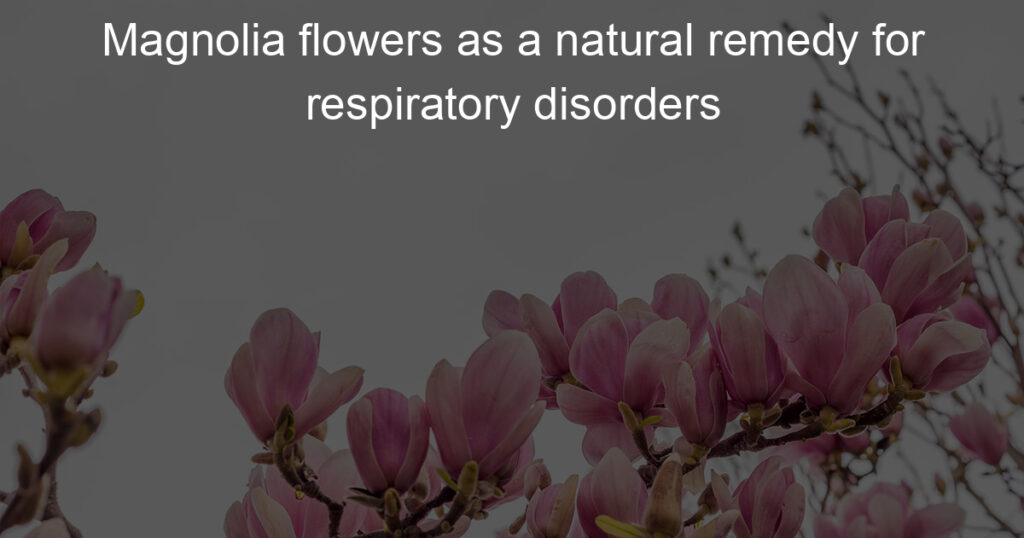Are you looking for a natural way to help with chronic respiratory issues? If so, then you may want to consider magnolia flowers as a potential solution. Rich in antioxidants and anti-inflammatory compounds, magnolia flowers have been used for centuries in traditional Chinese medicine to treat various ailments such as bronchial asthma and other respiratory problems.
From ancient times through today, experts around the world have praised this beautiful tree for its healing properties as well as its fragrant aroma.
In this blog post, we will explore what makes magnolia trees unique and why they could be beneficial when it comes to respiratory problems – all while celebrating the magnificent beauty of these majestic trees!
What are the medicinal uses of magnolia flowers?
Magnolia flowers have been used as a medicinal remedy for centuries, ranging from traditional Chinese medicine to modern science. The beneficial effects of magnolia flowers come from their active compounds, which are known to treat inflammation, nausea, anxiety, and depression.
Studies have also found that the extracts from these fragrant blooms can be effective in treating fever and clearing respiratory tract infections like bronchitis and asthma.
Additionally, the components extracted from magnolia flowers can help to reduce cholesterol levels and lower blood pressure. All of this makes it clear why magnolia flowers are an essential part of many healing regimes.
What can magnolia petals be used for?
Magnolia petals, with their waxy texture and pleasant fragrance, can be used for multiple surprising purposes. Used in historic potpourri mixes to add a splash of color, magnolia petals are often admired for their beauty and soft aroma.
In addition to this aesthetic use, they can also be steeped as tea, providing soothing health benefits such as decreased inflammation throughout the body and improved immune system functioning. Those looking to craft something special may even want to consider using magnolia petals as supply elements in homemade soaps or bath bombs!
Each beautiful bloom offers limitless possibilities when it comes to bringing a touch of nature’s beauty into our lives.
What is magnolia in Chinese medicine?
Magnolia, known as hou po in Chinese medicine, is a key herb used in traditional formulas to help relieve various symptoms related to the digestive system. It has been used for centuries to treat digestive issues such as indigestion, bloating, gas, anxiety, and sleep disorders.
It is also believed to have beneficial effects on the central nervous system and cardiovascular health. Recent research has shown that magnolia may be an effective natural treatment for stubborn cases of irritable bowel syndrome (IBS). In addition to its digestive benefits, magnolia is traditionally taken for anti-inflammatory purposes and can help promote tranquil energy in those suffering from stress or tension.
All in all, magnolia remains one of the most popular herbs used throughout East Asian countries as a natural remedy for a variety of physical and mental ailments.
What are the health benefits of magnolia bark?
Magnolia bark is gaining increasing popularity as a natural health supplement, thanks to the multitude of beneficial properties it is said to offer. The active compounds in magnolia bark, known as honokiol and magnolol, are believed to have anti-inflammatory, antimicrobial, and anti-anxiety effects.
Studies have shown that these compounds may help ease digestive issues, reduce pain associated with arthritis and muscle soreness, regulate hormones, boost the immune system, and even aid in weight loss.
Furthermore, magnolia bark has been found to possess antidepressive properties and may even help improve memory and cognitive function. With all its potential health benefits, it is no wonder that magnolia bark is fast becoming one of the most widely used natural remedies on the market today.
Magnolia medicinal uses
Magnolia, native to China, Japan, and the southeastern United States, has been historically used in traditional Chinese medicine as a health tonic due to its powerful healing properties.
In particular, the bark and flowers of this evergreen tree have been used in teas for their anti-inflammatory and anti-allergen benefits. The Chinese believe that magnolia acts as an aphrodisiac to increase libido and help with digestion problems, such as indigestion or bloating. Its most popular use is for stress relief; it soothes frayed nerves and can even act as a sleep aid.
Beyond its many uses in traditional remedies, magnolia also has important environmental benefits: it helps absorb carbon dioxide and purify waterways by removing pollutants from drifted soils. With all these beneficial uses for human and environmental health alike, it’s clear why magnolia continues to hold such an important place in traditional medicine today.
Final Thoughts
From ancient Chinese medical texts to modern-day scientific studies, magnolia flowers have proven to be a powerful natural remedy for respiratory disorders. The calming fragrance of the magnolia flower can be used as an anxiety reliever, providing relief for those that suffer from stress-related respiratory ailments such as asthma and bronchitis.
Furthermore, its antimicrobial properties have been known to help reduce inflammation in the upper and lower airways, combating allergies and coughs. With a growing body of research studying the health benefits of magnolia flowers, it is no doubt one of mother nature’s most wonderful solutions for combatting a range of respiratory issues.
So if you’re looking for an accessible and natural approach to improving your respiratory health, look no further than our magnolia flower ally!














